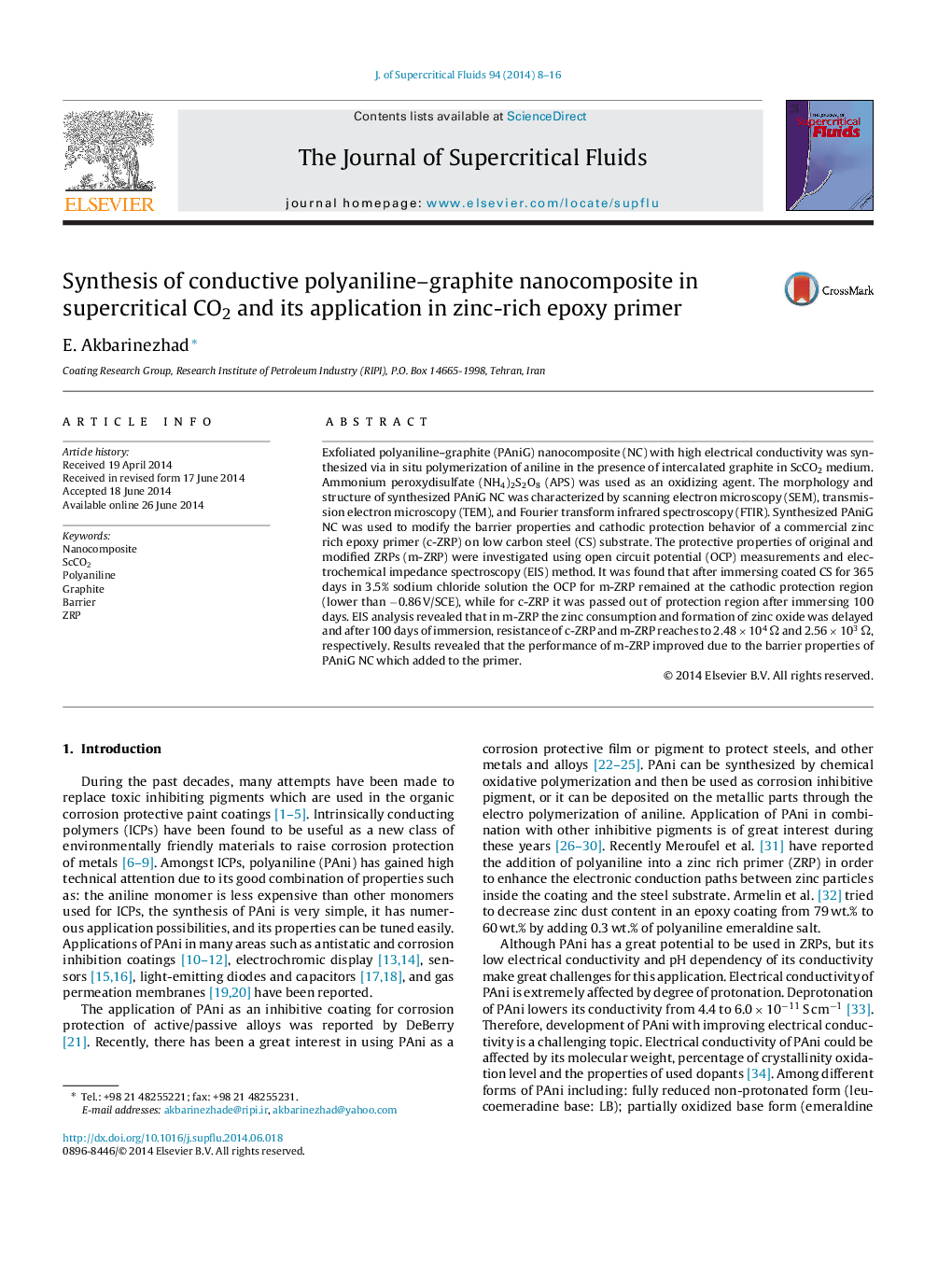| کد مقاله | کد نشریه | سال انتشار | مقاله انگلیسی | نسخه تمام متن |
|---|---|---|---|---|
| 230401 | 1427383 | 2014 | 9 صفحه PDF | دانلود رایگان |
• Graphite was used to prepare high conductive polyaniline–graphite nanocomposites.
• Polymerization was carried out in supercritical CO2 to achieve exfoliated nanocomposites.
• Synthesized nanocomposite was used to enhance the barrier properties of a zinc rich epoxy primer.
• Barrier properties of modified and original primers were evaluated and compared with each other via different electrochemical methods.
Exfoliated polyaniline–graphite (PAniG) nanocomposite (NC) with high electrical conductivity was synthesized via in situ polymerization of aniline in the presence of intercalated graphite in ScCO2 medium. Ammonium peroxydisulfate (NH4)2S2O8 (APS) was used as an oxidizing agent. The morphology and structure of synthesized PAniG NC was characterized by scanning electron microscopy (SEM), transmission electron microscopy (TEM), and Fourier transform infrared spectroscopy (FTIR). Synthesized PAniG NC was used to modify the barrier properties and cathodic protection behavior of a commercial zinc rich epoxy primer (c-ZRP) on low carbon steel (CS) substrate. The protective properties of original and modified ZRPs (m-ZRP) were investigated using open circuit potential (OCP) measurements and electrochemical impedance spectroscopy (EIS) method. It was found that after immersing coated CS for 365 days in 3.5% sodium chloride solution the OCP for m-ZRP remained at the cathodic protection region (lower than −0.86 V/SCE), while for c-ZRP it was passed out of protection region after immersing 100 days. EIS analysis revealed that in m-ZRP the zinc consumption and formation of zinc oxide was delayed and after 100 days of immersion, resistance of c-ZRP and m-ZRP reaches to 2.48 × 104 Ω and 2.56 × 103 Ω, respectively. Results revealed that the performance of m-ZRP improved due to the barrier properties of PAniG NC which added to the primer.
Figure optionsDownload as PowerPoint slide
Journal: The Journal of Supercritical Fluids - Volume 94, October 2014, Pages 8–16
